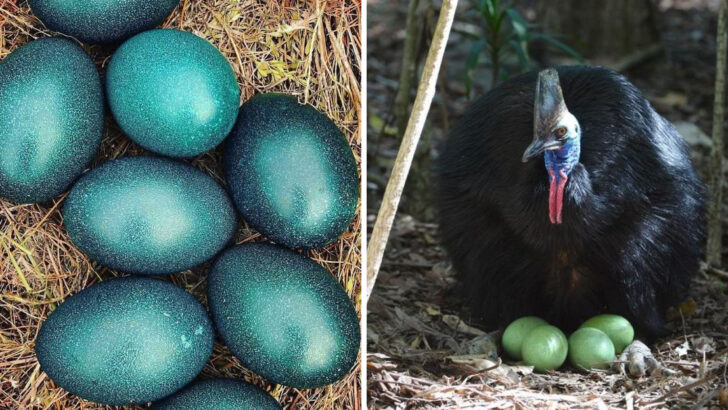Bird eggs are among nature’s most exquisite creations, showcasing an extraordinary range of colors, patterns, and sizes.
Each species lays eggs that are not only vital for reproduction but also serve as a unique artistic expression of the avian world.
From the vibrant hues of the Tinamou’s eggs to the intricate speckling of the Oystercatcher’s, each egg tells a story about the bird’s habitat, behavior, and evolution.
This blog explores ten of the most stunning bird eggs found across the globe, highlighting their beauty and the fascinating characteristics that make them stand out.
American Robin
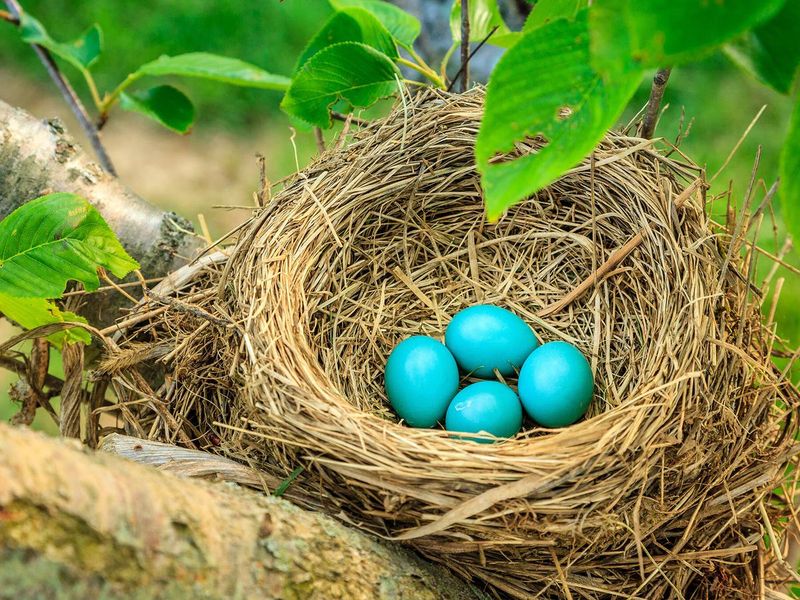
The American Robin’s egg is a symbol of the arrival of spring, with its radiant blue shell captivating bird enthusiasts and nature lovers alike. This hue is not just for show; it’s a result of biliverdin, a pigment deposited during the egg’s formation.
The color helps in camouflage, blending with the sky and deterring predators. The robin lays its eggs in nests often found on trees or shrubs, surrounded by the sounds of a bustling backyard.
Each egg represents new beginnings, fostering a sense of hope and renewal with every season.
Emu
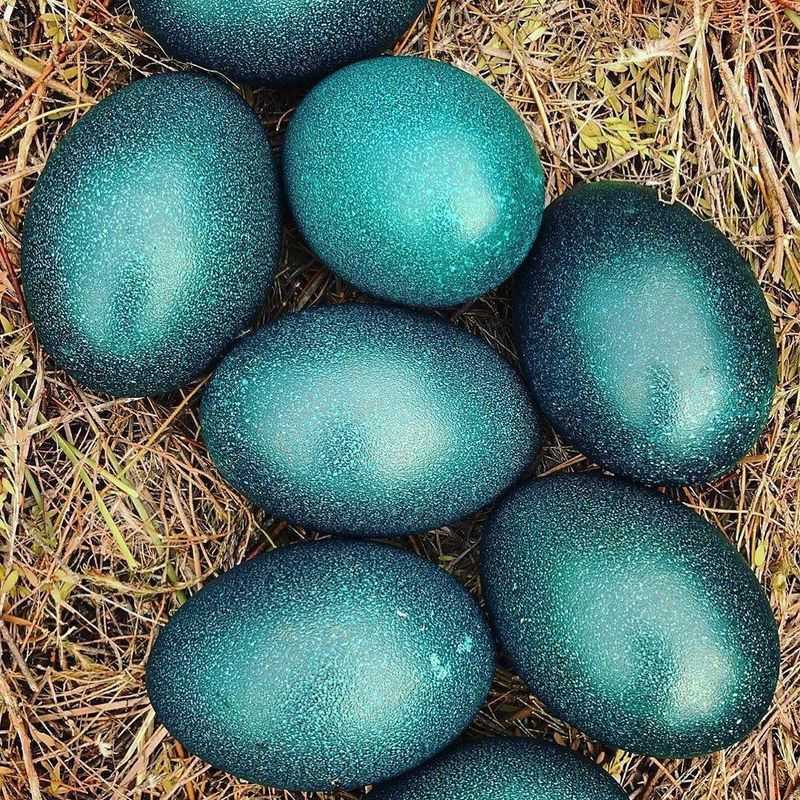
Emu eggs are distinctive in their large size and deep green color, a perfect match to the Australian landscape they call home. Weighing around 1 pound each, these eggs are marvels of nature’s architecture.
The dark coloration serves a dual purpose: it provides camouflage on the ground and absorbs heat to aid incubation.
Found in simple ground nests, these eggs symbolize endurance and adaptability. Emus, being flightless, rely on their speed and agility, traits that are mirrored in their eggs’ robust nature and resilience.
Cassowary

Cassowary eggs are strikingly beautiful, with a glossy green shell that mirrors the lush rainforests of their native habitats in Australia and New Guinea. These eggs are laid in shallow ground nests, hidden among the thick vegetation.
The color isn’t just for aesthetics; it helps the eggs blend into their surroundings, protecting them from predators.
Cassowaries are known for their solitary nature and powerful presence, traits reflected in the unique and vibrant appearance of their eggs.
Common Murre
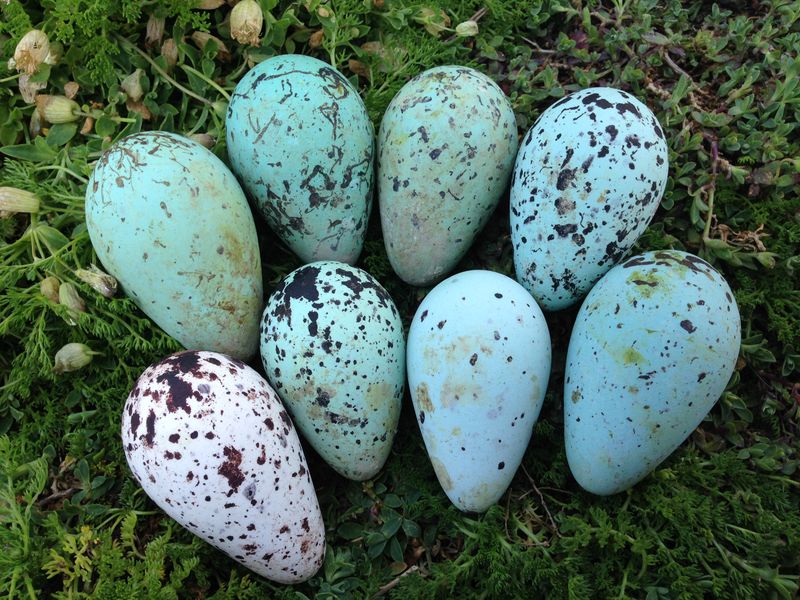
The Common Murre lays pear-shaped eggs that are designed to roll in a circle rather than fall off the cliff ledges where they are deposited. These eggs are an artist’s canvas, displaying a myriad of colors and speckles.
Each egg has a unique pattern, which helps parents identify their own in the crowded colonies.
This remarkable adaptation not only ensures the survival of the chick inside but also tells a story of evolution and survival in some of the harshest environments on Earth.
Tinamous
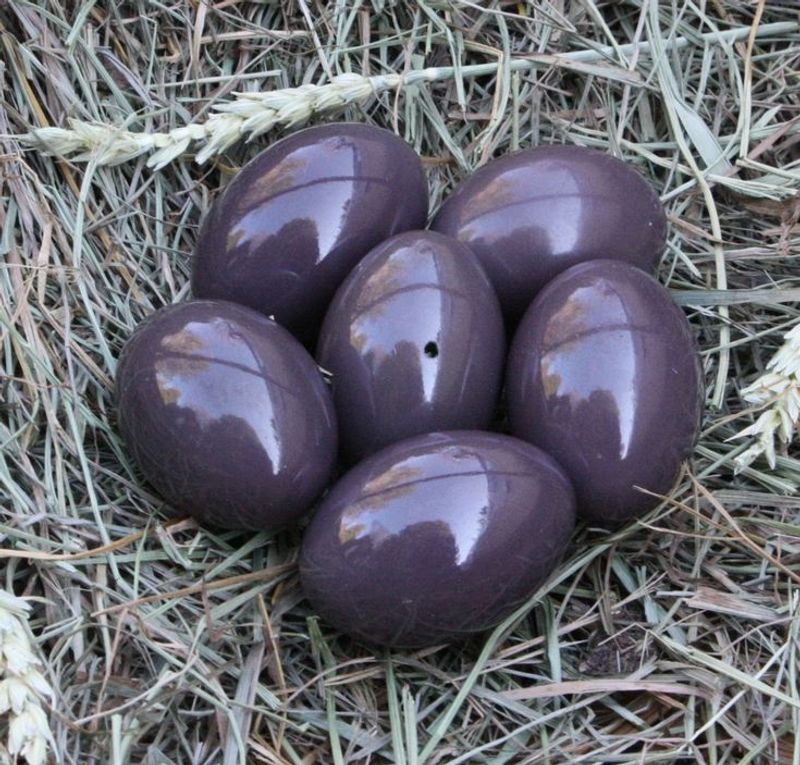
Tinamous, native to Central and South America, lay some of the most colorful bird eggs in the world. Their eggs come in a range of colors, from glossy blues and greens to deep purples.
These vibrant hues serve as both a marvel of nature and a functional trait, helping in camouflage among the forest floor.
Despite being capable of short flights, Tinamous prefer to nest on the ground, relying on their eggs’ hard shells and vivid colors to deter predators and nurture life.
Oystercatcher

Oystercatcher eggs are masterpieces of natural camouflage, speckled in such a way that they become nearly invisible against the rocky shores where they are laid. These eggs are oval-shaped and exhibit a range of beige and brown tones, perfectly blending into their environment.
Their speckling is not just random; it plays a crucial role in protecting the eggs from predators and harsh weather conditions.
Laid in simple scrapes on the ground, these eggs reflect the Oystercatcher’s adaptability and the subtle beauty of nature.
Eastern Bluebird
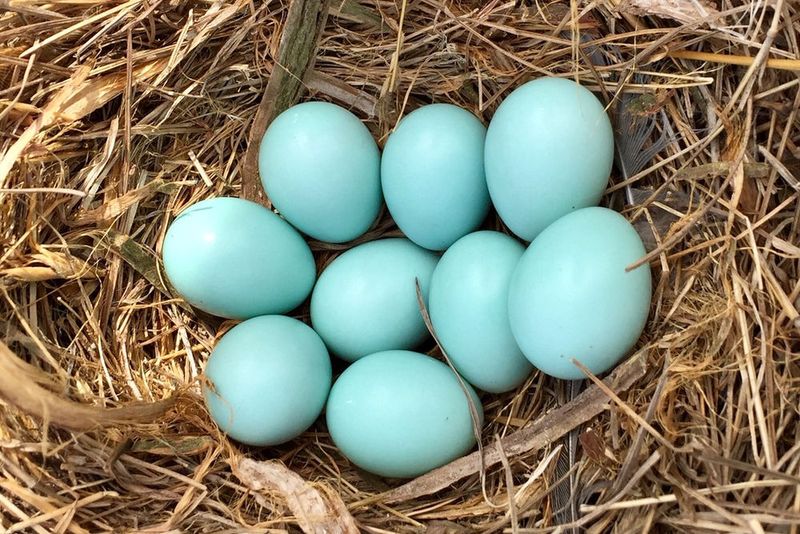
The Eastern Bluebird (Sialia sialis) is famous for its vibrant blue feathers and sweet song, but its eggs are just as captivating.
Typically, Eastern Bluebird eggs are a beautiful pale blue color, often described as “robin’s egg blue,” although some can be almost white. These smooth, oval-shaped eggs usually come in clutches of 3 to 7.
Bluebird parents carefully incubate their eggs for about 12 to 14 days before the chicks hatch. During this period, the eggs’ delicate blue hue helps camouflage them against predators in the nest cavity. Watching these eggs hatch is a delightful reminder of nature’s quiet wonders, making Eastern Bluebirds a favorite among birdwatchers and backyard enthusiasts alike.
Cuckoo
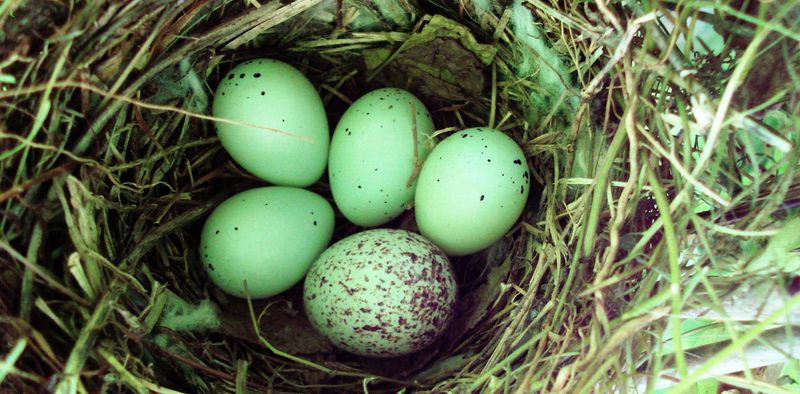
Cuckoo eggs are renowned for their mimicry, often resembling the eggs of host birds like the Reed Warbler. This evolutionary strategy allows Cuckoos to lay their eggs in other birds’ nests, leaving the unwitting hosts to incubate and raise their young.
The eggs are usually small, with colors and patterns that match the host’s clutch.
This cunning adaptation is a marvel of evolution, showcasing the complex interplay between different species and the intriguing aspects of avian life.
House Finch
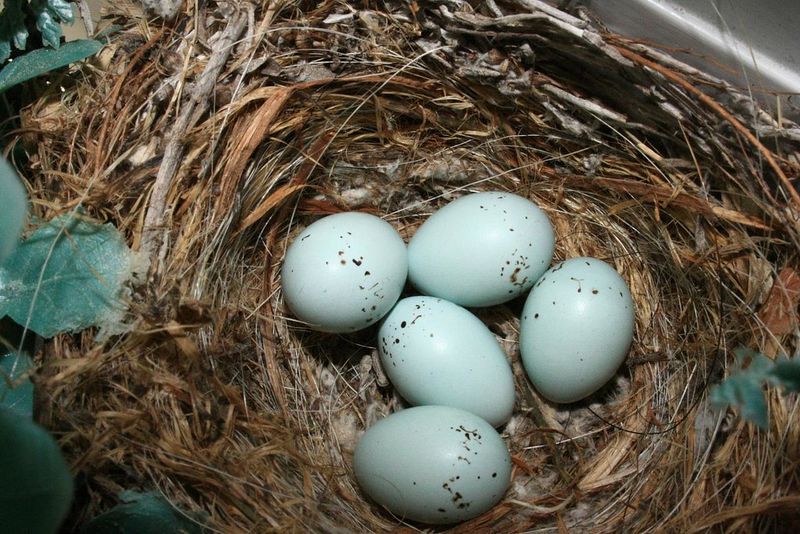
House finches (Haemorhous mexicanus) lay eggs that are small and subtle in appearance, perfectly suited to blend into their nesting environment. Typically, their eggs are pale blue or greenish-white with fine speckles or spots of brown and purple. Each clutch usually contains between 2 and 6 eggs.
These speckled eggs help camouflage them against predators while they’re incubated, which usually takes about 12 to 14 days. House finches build their nests in a variety of locations, from tree branches to urban ledges, making their eggs a common but charming sight for bird lovers everywhere.
Black-headed Gull
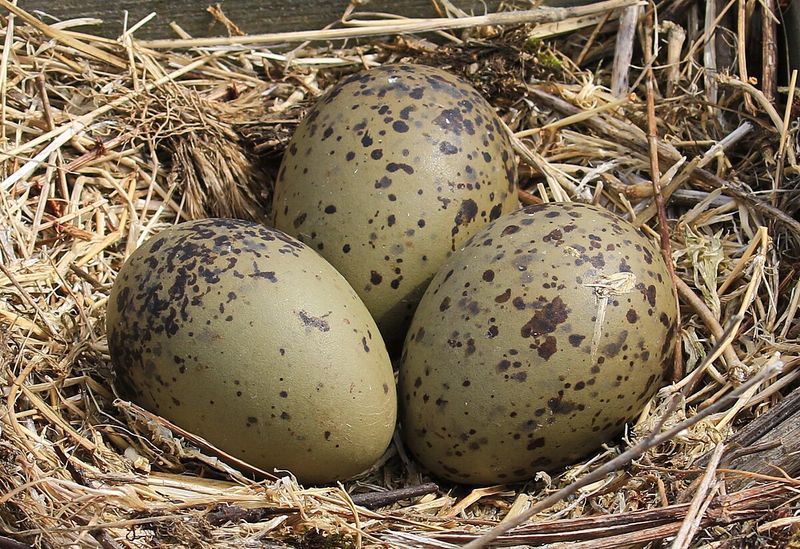
The Black-headed Gull’s eggs are elegantly speckled, creating a natural disguise among the reeds and grasses of their nesting sites. Their coloration, ranging from olive to brown, plays a crucial role in avoiding predation.
These eggs are laid in colonies, where the gulls’ loud calls and social behavior provide additional layers of protection.
The intricate patterns on each egg are a small part of the vibrant ecosystem of wetland areas, contributing to the delicate balance of life by ensuring the gulls’ successful reproduction.

